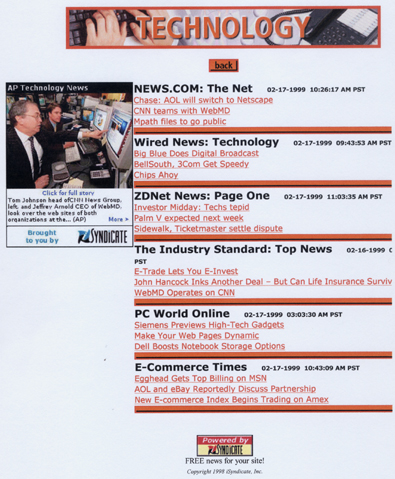Evolving from Web 1.0 to Web 2.0

In “Web 2.0 = a piece of jargon,” fellow ZDNet blogger Dan Farber highlights Tim Berners-Lee’s recent commentary on Web 2.0 and notes that “For Berners-Lee, the Web is just the Web (no versioning) and has always been about interaction between people online.”
Berners-Lee reflected on the evolutionary nature of the Web during an IBM developerWorks interview by Scott Laningham. Among the questions: “what do you think about wikis, and is that just another way of doing something conceptually that was already being done?”
Berners-Lee: Well, there had always been systems where a lot of...systems I'd say you could roughly divide into two categories: those which were, where people created information systems and created...[in one level] people created it and the other people browsed it, like sort of CD ROM hypertext based systems. And systems where you are interacting with the data, things like a calendar. Where when you look at your calendar, at any point you're browsing through the calendar, you can put any event in there. Your address book, you can create a new address, or if you see that somebody's telephone number is wrong, you can go fix it…
Berners-Lee’s evolutionary view of Web 1.0 to Web 2.0 led me to reflect on my own Web 1.0 professional experiences and to consider how Web 1.0 has served as a precursor to Web 2.0. I recount two of my Web 1.0 implementations below.
NEWS AGGREGATION AND DISTRIBUTION VIA HEADLINE SYNDICATION
iSyndicate was providing headline news feeds in the 1990’s to individual Websites free-of-charge. Medill School of Journalism New Media Studies 2001 program described the iSyndicate model:
- Offers news feeds from providers such as Reuters and AP, genre-specific publication such as rollingstone.com and columns from self-syndicators
- First model: iSyndicate Express: member Web sites have free access to content feeds they could never hope to license on their own. Isyndicate offers content from over 700 providers to more than 170,000 Web sites. Web sites pay iSyndicate a nominal fee for clickthroughs (when users click syndicated links)
- Second model: iSyndicate Network: charges Web sites a fee to license content feeds into a company's Web site. Web sites can incorporate syndicated content in to their existing Web pages.
I used the service to add real-time, dynamic contextual news content to my own Web properties. Below is a screen shot of my cost-free implementation of the iSyndicate application, circa February, 1999. Of note, ZDNet News Page One headlines: “Palm V expected next week” and “Sidewalk, Ticketmaster settle dispute.”

iSyndicate was acquired by YellowBrix in 2001. YellowBrix was formed in1997, a spin-off of Infoseek, GO Network. Today, YellowBrix "fuels enterprise platforms with critical, real time business information.” The company describes its current value proposition:
The YellowBrix solution offers up to 130,000 breaking news stories a day culled from thousands of the most reliable sources and dynamically links incoming news to valuable company, financial, and industry data. YellowBrix' innovative technology solution then organizes this data intelligently - based on clients' requirements - and seamlessly presents the most important information to their users, enabling them to make informed business decisions and stay a step ahead of the competition.
COMMUNITY BUILDING VIA FACILITATION OF VISITOR COMMENTS
Website Guestbooks were enabling visitor interaction through user comment and feedback mechanisms in the 1990’s. Fuqua School of Business Duke University Digital Marketing CyberTrends in 1997 cited Kodak’s use of a guestbook for interactive marketing:
The potential of the Internet for customer interaction and direct commerce is enormous, if not limitless. To date, more than 19,000 guestbook interactions have taken place with customers; Kodak's Chief Marketing Officer and Senior Vice President Carl Gustin.
I implemented guestbooks at my own Web properties to solicit visitor comments, promote engagement and spur return visits. Below is a screen shot of one of my guestbook implementations, also circa February, 1999.
I asked Website visitors to “Join the NYNYMall Community, Thanks for stopping by the NYNYSounding Board. Share your opinions. Sound off about NYC! Please use the pull-down menus and comment areas. Talk, or just ramble, and let us know what we can offer you at NYNYMall.com. To view previous Soundings Off, scroll down.”
On February 12, 1999, “Liz from LA” posted: “Is that cute guy that gave up his seat for me at the 42nd street station still there?”
Do my Web 1.0 interactive community building and headline news syndication implementations ring a Web 2.0 bell? They should; just take a look at the “Talkback, add your opinion” feature below this post and the “Subscribe to Feed” option alongside this post!